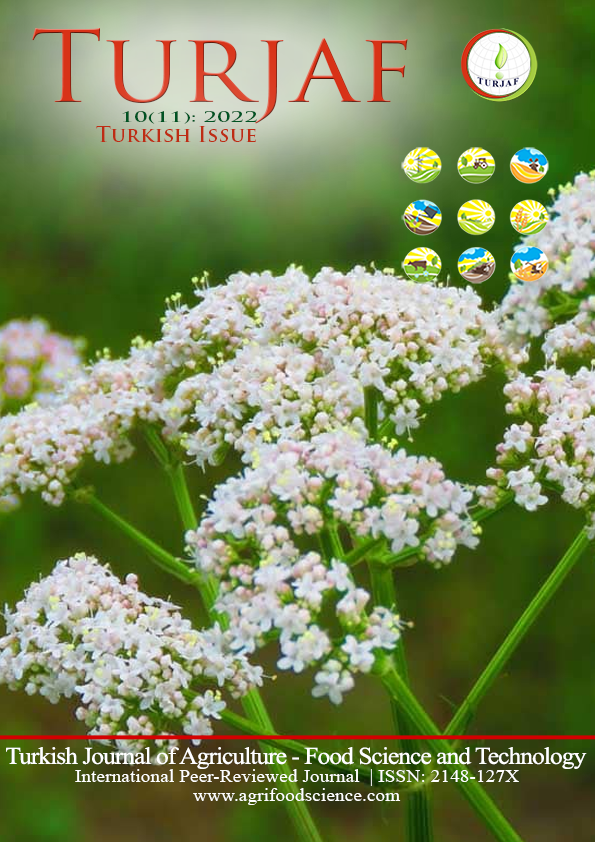Effect of Phytohormone Applications on Fruit Yield and Essential Oil Content in Anise (Pimpinella anisum L.)
DOI:
https://doi.org/10.24925/turjaf.v10i11.2081-2086.4908Keywords:
Anise, Methyl jasmonate, Gibberellic acid, Naphthalene acetic acid, Fruit yieldAbstract
This study was carried out in 2019 to determine the effects of methyl jasmonate (MJ), gibberellic acid (GA3) and naphthalene acetic acid (NAA) applications on fruit yield and essential oil content in anise (Pimpinella anisum L.). Different concentrations of MJ (0, 0.1, 0.5 and 1 mM), GA3 (0, 50, 100 and 150 ppm) and NAA (0, 25, 50 and 100 ppm) were pulverized to the plant during the beginning of the flowering. Phytohormone applications had a statistically significant effect on the parameters examined in the study, and the effects of the applications generally varied depending on the application doses. While GA3 and NAA applications significantly increased the fruit yield and essential oil content compared to the control, high-dose MJ applications generally had a negative effect on all parameters except that the thousand-grain weight. The highest fruit yield was obtained from 100 and 150 ppm GA3 and 25 and 50 ppm NAA applications, while 1 mM MJ applications significantly reduced fruit yield compared to the control. Depending on the applications, the fruit essential oil content varied between 1.94%-2.69% and the essential oil yield varied between 1.42-3.18 L/da. While the highest essential oil yields were obtained from 100 ppm GA3 and 50 ppm NAA applications, 1 mM MJ applications caused a significant decrease in essential oil yield compared to the control.Downloads
Published
29.11.2022
How to Cite
Şanlı, A., Tosun, B., Cirit, Y., & Ok, F. Z. (2022). Effect of Phytohormone Applications on Fruit Yield and Essential Oil Content in Anise (Pimpinella anisum L.). Turkish Journal of Agriculture - Food Science and Technology, 10(11), 2081–2086. https://doi.org/10.24925/turjaf.v10i11.2081-2086.4908
Issue
Section
Research Paper
License
This work is licensed under a Creative Commons Attribution-NonCommercial 4.0 International License.









